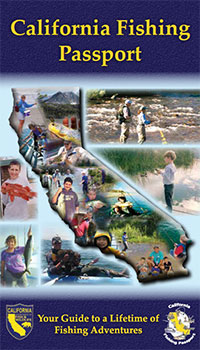 The California Fishing Passport Program is a fishing incentive and recognition program that highlights and promotes fishing throughout the state. Make plans to explore California in pursuit of the state's most popular fresh and salt water finfish and shellfish—and start the fishing adventure of a lifetime.
The California Fishing Passport Program is a fishing incentive and recognition program that highlights and promotes fishing throughout the state. Make plans to explore California in pursuit of the state's most popular fresh and salt water finfish and shellfish—and start the fishing adventure of a lifetime.